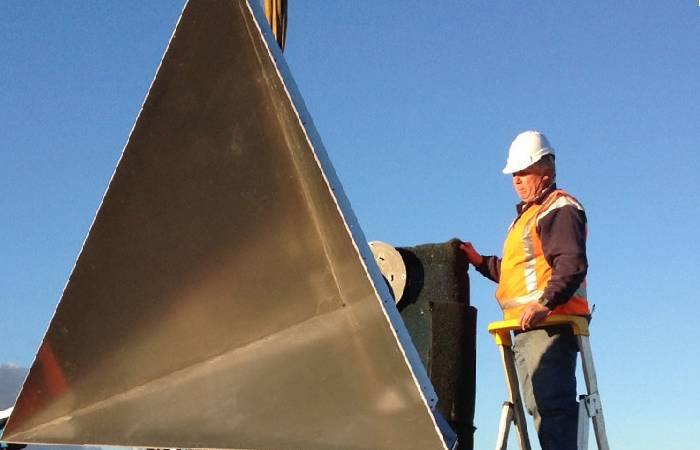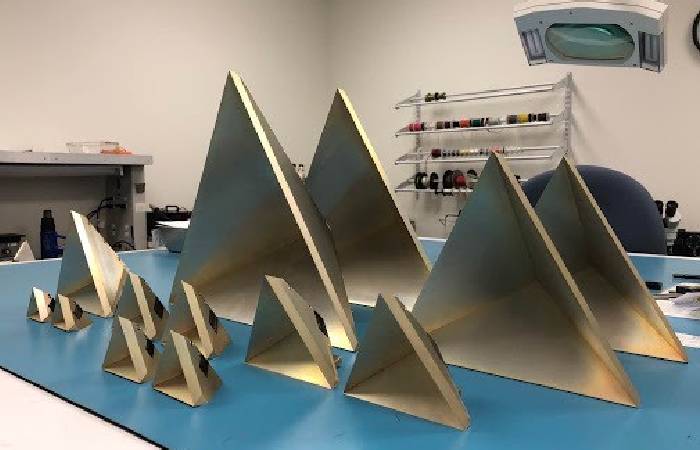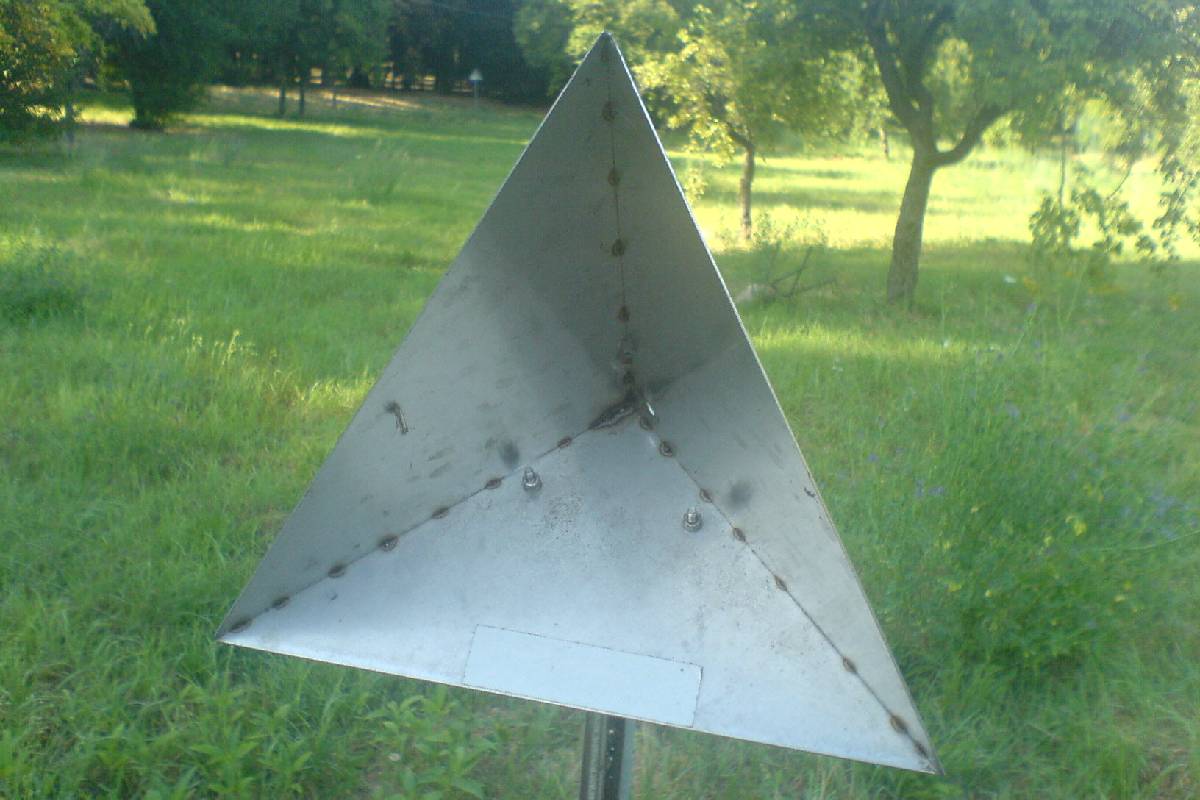A corner reflector is a retroreflector containing three mutually vertical and intersecting flat surfaces, reflecting waves directly towards the source but is translate. The three intersecting surfaces often take square shapes. Metal radar corner reflectors are use to reflect radio waves from radar equipment, and optical corner reflectors are called corner cubes or cube corners. Also, three-sided glass prisms are use in survey and laser ranging.
Beginning

The incoming ray is reproduce three times, once from each surface, resulting in a setback of direction. To see this, the three corresponding normal vectors of the perpendicular sides of the corner can consider to form a basis (a rectangular coordinate system) (x, y, z) in which the direction of an arbitrary incoming ray is represented [a, b, c]. When the beam is reflected from the first side, say x, the x component of the glow, a, flips to −a while the y and z components do not change, giving a direction of [−a, b, c].
Similarly, when reflect from the y side and finally from the z side, the b and c components are reverse. Therefore, the direction of the ray goes from [a, b, c] to [−a, b, c] to [−a, −b, c] to [−a, −b, −c], and out the reflector wedge with the three steering components exactly reversed. The distance travelled relative to a plane is normal to the direction of the rays. And also the same for any beam enter the reflector, regardless of where it is reflect first.
on Radar

Radar corner reflector are design to reflect microwave radio waves emit by radars back to the radar antenna, and it causes them to show a strong “return” on radar screens. A simple corner reflector consists of three conductive sheets or screen surfaces at 90° to each other, joined together at the edges, forming a “corner”. These reflect radio waves in front of them parallel to the incoming beam. Also, to create a corner reflector that reflects radar waves coming from any direction, eight corner reflectors are place back to back in an octahedron (diamond) shape. And also, to work, reflective surfaces must extra significant than several wavelengths of radio waves.
In maritime navigation, they are place on the abutments of bridges, buoys, ships, and, most importantly, lifeboats to ensure they are see on ships’ radar screens. Corner searchlights are place on the ship’s masts at the height of at least 4.6 m (15 ft) above sea level (giving them an approximate minimum distance to the horizon of 8 kilometres or 4.5 nautical miles). ). Marine radar usages X-band microwaves with wavelengths of 1 to 1.5 inches (2.5 to 3.75 cm), so small reflect less than 12 inches (30 cm) are use. And in air navigation, corner reflector are install on rural runways to show up on aircraft radars.
In Optics
In optics, corner reflectors usually consist of three reflecting mirrors or prism faces that reflect an incident light beam in the opposite direction. Also in survey, retroreflect prisms are commonly use as targets for long-range electronic distance measurement using a total station.
Five sets of optical corner reflector were place on the Moon for use in lunar laser ranging experiments that observe the time of flight of a laser to measure the Moon’s orbit more precisely than was previously possible. The three largest remained placed by NASA as part of the Apollo program, and the Soviet Union constructed two smaller ones on the Lunokhod rovers.
Car and bicycle taillights are mould with sets of small corner reflect, with different angled sections for view from different angles. Reflective paint for night visibility usually contains spherical retroreflective beads. The thin plastic with microscopic corner reflective structures can use as tape, signs, or sewn or moulded into clothing.

